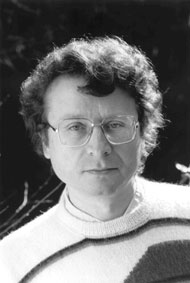|
|
Tristan Murail
Gavin Thomas introduces the work of Tristan Murail (1947– ).
Overview

The leading exponent of so-called “spectral” music, Tristan Murail has done more than any other living composer, not only to challenge accepted ways of writing music, but to redefine our understanding of the very nature of musical material itself. Returning to the fundamental acoustic properties of sound for his inspiration, Murail has invented (or simply discovered) a musical world of huge originality and often disconcerting strangeness. But for all his work’s theoretical novelty and sophistication, his overwhelming interest in harmony, sonority and musical colour places him firmly in the line of great French composers stretching back through Boulez to Messiaen, Ravel and Debussy.
It was with Messiaen that Murail studied composition at the Paris Conservatoire from 1967 to 1972, having already received degrees in Arabic and Economics. Messiaen’s idiosyncratic attitude to harmony proved an important influence, as did early Ligeti pieces like Atmosphères and Lontano, with their emphasis on “sound masses” rather than individual notes. Murail subsequently spent two years in Italy as the recipient of the Prix de Rome, where he met the maverick Italian composer Giacinto Scelsi, whose work was another important example of the use of sound for sound’s sake.
Returning to Paris in 1973, Murail (along with Gérard Grisey) founded Ensemble l’Itinéraire and began to establish the theoretical and technical bases of what would later come to be known as spectral music. Reacting against the abstract strictures of serialism championed by Boulez, Stockhausen et al., spectral music took as its guiding principle the natural acoustic qualities of sound itself, often using the analysis of particular sounds (or sound “spectra”) as its creative starting point. As Murail has put it: “I make music by working the sound matter like a sculptor, revealing the form that is hidden within the block of stone, rather than constructing it with bricks, as is the case in a traditional approach and counterpoint.” Early works such as Mémoire/Erosion (1976) and Ethers (1978) used formal processes – often inspired by studio techniques such as frequency modulation and tape loops – and unorthodox instrumental sounds to blur the distinction between harmony and timbre, and between music and noise. This early phase reached its culmination in the majestic orchestral work Gondwana (1980), a kind of spectral symphony which encapsulates the tropical luxuriance of Murail’s music in all its rich and outlandish beauty.
Starting in 1980, Murail began a long-term association with IRCAM (see p.000), where computer-music studios allowed him to further explore the marvellous inner life of sound, and to make live electronics an increasing element of his music. Désintégrations (1983) is typical of his music from these years, the entire piece being based on the analysis and deconstruction of certain instrumental timbres, with an important part for computer-generated tape. In subsequent works like Time and Again (1985) and Serendib (1992) the smooth, evolutionary style of Gondwana and earlier pieces gives way to more a discontinuous and unpredictable approach to form in which the characteristic colours and harmonies of spectral music are invigorated with a new sense of fluidity, drama and unpredictability.
During the 1990s, Murail began to work with ever-more complex sound objects – whereas earlier pieces had used relatively abstract objects like particular instrumental timbres and electronically generated harmonies, later works such as L’esprit des dunes (1994) and Partage des eaux (1995) use sources as disparate as Mongolian overtone singing, Tibetan traditional instruments and even natural sounds such as the noise of water flowing against rocks. Murail now lives in New York where he is a professor of composition at Columbia University.
Article and review pages originally published in The Rough Guide
to Classical Music
|
|